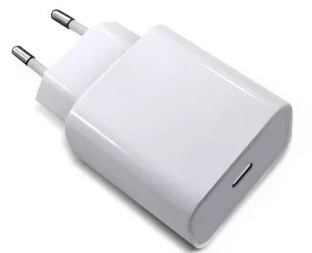It seems like every new phone promises faster charging, but what do the different standards mean, and are they equally speedy?
Understand Fast Charging
Being able to quickly charge your phone or tablet can mean the difference between hours of care-free use or scrambling to find the nearest coffee shop for a power outlet. Fast charging is an increasingly popular feature that allows you to power up your device in just a fraction of the time it takes to do it the old-fashioned way. But not all products use the same type of fast charging—and not all chargers support the various standards. Here's what you need to know to make sure you're getting the fastest charge possible.
The output of a charge is measured in amperage and voltage. Amperage (or current) is the amount of electricity flowing from the battery to the connected device, while voltage is the strength of the electric current. Multiplying volts by amps gives you wattage, the measure of total power.
To make a device charge faster, most manufacturers either boost the amperage or vary the voltage in order to increase he amount of potential energy. The majority of fast charging standards typically vary the voltage rather than boost the amperage.
Standard USB 3.0 ports output at a level of 5V/1A for smaller devices like wearables. Most phones and other devices are capable of handling 5V/2.4A. For fast charging, you're looking at something that bumps the voltage up 5V, 9V, 12V, and beyond, or increases amperage to 3A and above.
Keep in mind, your device will only take in as much power as its charging circuit is designed for.For fast charging to work, you need a phone or other device with a charging circuit capable of using one of the fast charging standards, and an adapter and cable enabled for that same standard.
Type of Fast Charging USB Charger
Let us see different quick charger for different phones
1. Apple Fast Charging 18W USB C Quick charger
Starting with the iPhone 8, all of Apple's phones support fast charging. Unless you own an iPhone 11 Pro or 11 Pro Max, however, you're probably using one of Apple's slow 5W adapters to charge your phone.
Apple uses USB Power Delivery for fast charging, and claims you’ll see a 50 percent increase in battery life in just 30 minutes. In order to get these speeds, however, you need to use at least an 18W adapter with a USB-C-to-Lightning cable. A more powerful adapter won’t harm your phone, but it’s unlikely to help. We reached out to Apple to determine the most powerful adapter its iPhone lineup will support, but a representative for the company said it doesn’t disclose maximum charging specifications.
That said, you can't go wrong with our 18W USB C quick charger for US plug and 18W USB C quick charger for EU plug


2. Most phones fit Qualcomm Quick Charge
The most common fast charging standard is Qualcomm's Quick Charge because of the widespread nature of the company's chipsets. That said, many of the phones that support newer Quick Charge standards aren't sold in the US.
Quick Charge 3.0 is one of the most common fast charging protocols used in midra, and Quick Charge 3+ brings similar speeds to midrange phones with some Qualcomm Snapdragon 700-series chipsets. Quick Charge 4+ is the the current global gold standard for flagships that don’t use proprietary fast charging technologies. Each standard is backward compatible with the previous one, so older cables and adapters will still work.
What does APS have for QC 3.0

What You Need for Fast Charging
Depending on the device you have, the fast charging standard you're able to use will vary. Check what your phone supports, then look at your wall adapter to see if it supports the same standard (they're usually labeled). Then make sure your cable is compatible (you're best off using one the one that come with your phone or adapter). If you need to buy a new wall adapter, cable, or wireless charging pad, take note of what standard it supports.
Post time: Nov-27-2020
